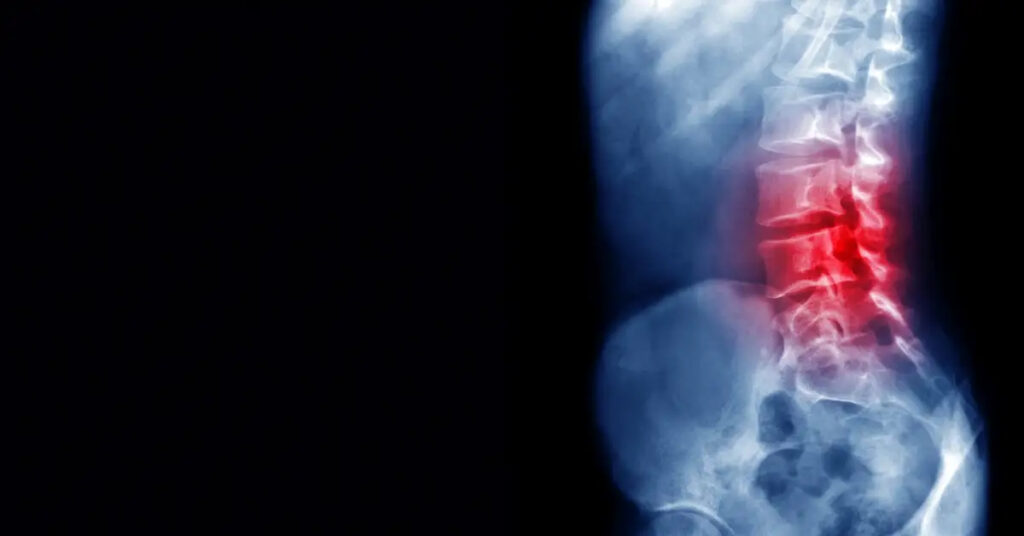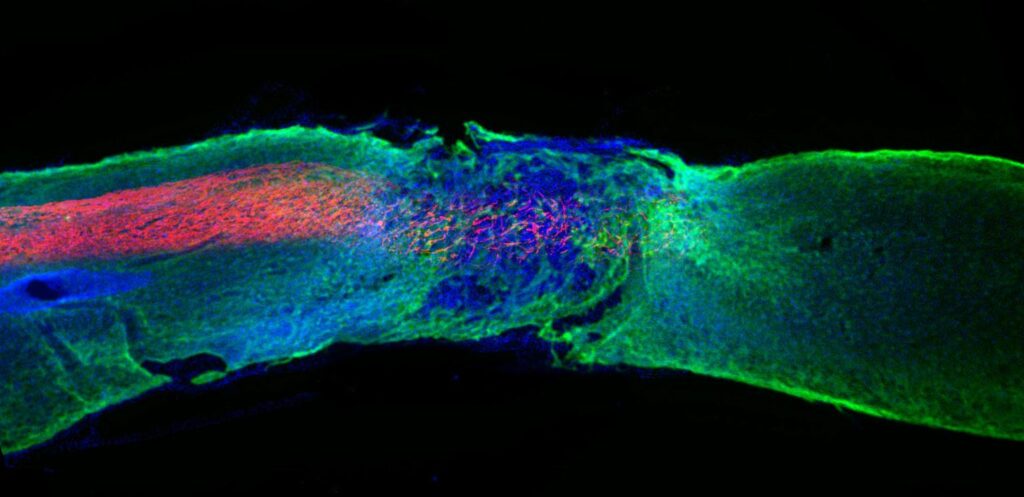Breakthrough in Regenerative Medicine: Repairing Spinal Cord Injuries with Dancing Molecules
Many Americans suffer from spinal cord injuries (SCI). According to the 2020 data from the National SCI Statistical Center (NSCISC), about 78 percent of new cases of SCI are males, with the average age at the time of injury placed at 43 years old. The average number of Americans today with SCI is about 294,000.
The most common causes of spinal cord injury are vehicular crashes (36 percent), falls (32.2 percent, violence (14 percent), sports (7.8 percent, surgical/medical (4.2 percent), and various other reasons (3.2 percent).
New therapy for spinal cord injury
Severe spinal cord injury is the subject of research of Illinois’ Northwestern University team. The study, which is still in the experimental stage using lab mice, shows promise. The research team developed a new injectable therapy using ”dancing molecules” to repair tissue and reverse paralysis caused by severe injury to the spinal cord.
The researchers administered an injection to the tissues around the spinal cords of paralyzed mice. After four weeks, the test animals were able to walk again.
The research was published in the journal Science in its November 12, 2021 issue.
Results of the test
The researchers said they sent bioactive signals to trigger the cells to repair and regenerate. The therapy they developed improved the condition of the injured spinal cords in different ways:
- The severed extensions of axons (neurons) regenerated
- Significant decrease in scar tissue, which can create a physical block to regeneration and repair
- Myelin, the insulating layer of neurons that help transmit electrical signals, regenerated around the cells
- Functional blood vessels formed at the injury site to provide nutrients to the cells around the location of the injury
- Survival of more motor neurons
The researchers found that the materials will biodegrade into cell nutrients within 12 weeks after the therapy takes effect. Eventually, the therapy will expel the body without side effects.
Dancing molecules
The scientists developed a gel containing nanofibers, which they injected into the spinal cords of test mice. The therapy mimics the molecules of the spinal cord, and they ”dance” to make contact with cell receptors. The action is what triggers the cells to move, according to published research.
The new connections developed propel the severed pathways between axons or nerve cells to regenerate, leading to better regrowth. In their research, a single dose of the dancing molecules was enough to repair the tissue in their test animal, reversing the total paralysis. After four weeks, the mice fully recovered and could walk again.
Aside from treating paralysis, the therapy caused the multiplication of healthy cells, promoted cell regrowth, and healed parts of the body that support the health of the nervous system.
It is difficult (if at all) to recover from the debilitating and painful effects of an injury to the spinal cord. According to the National Spine Cord Injury Statistical Center, less than three percent can recover some of the fundamental physical functions. At some point of their initial injury, about 30 percent of the patients will be hospitalized again.

Promising therapy
The leader of the study and expert in regenerative medicine, Prof. Samuel I. Stupp of Northwestern, it is the first study where the researchers were able to control the collective motion of molecules through its changes in chemical structure. The process enabled them to increase the efficacy of the therapy. The professor said that the specific objective of their research is to find and develop a treatment that can prevent patients from being paralyzed after a disease or major trauma. Many studies were done to find a therapy because the central nervous system, comprising the brain and spinal cord, cannot repair itself after the onset of a degenerative disease or injury.
With the promising results, the professor said they are going directly to the FDA to start the process of getting the ”dancing molecule” therapy approval for human use.
The professor added that the therapy could have more applications in treating the effects of stroke and other degenerative diseases. He said that the tissues of the central nervous system that they successfully regenerated in their injured spinal cord study are tissues similar to those in the brain that a stroke affects. Likewise, they are identical to the tissues impacted by Alzheimer’s disease, Parkinson’s disease, Lou Gehrig’s disease, or amyotrophic lateral sclerosis (ALS). Therefore, he believes that there are more biomedical applications of their therapy.
Research teams from various universities are making wonderful inroads into the medical field, helping patients through a range of scientific breakthroughs, from robotics to artificial devices, synthetic solutions, injectables, 3D printing, and more.
